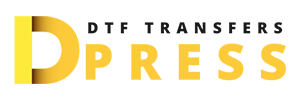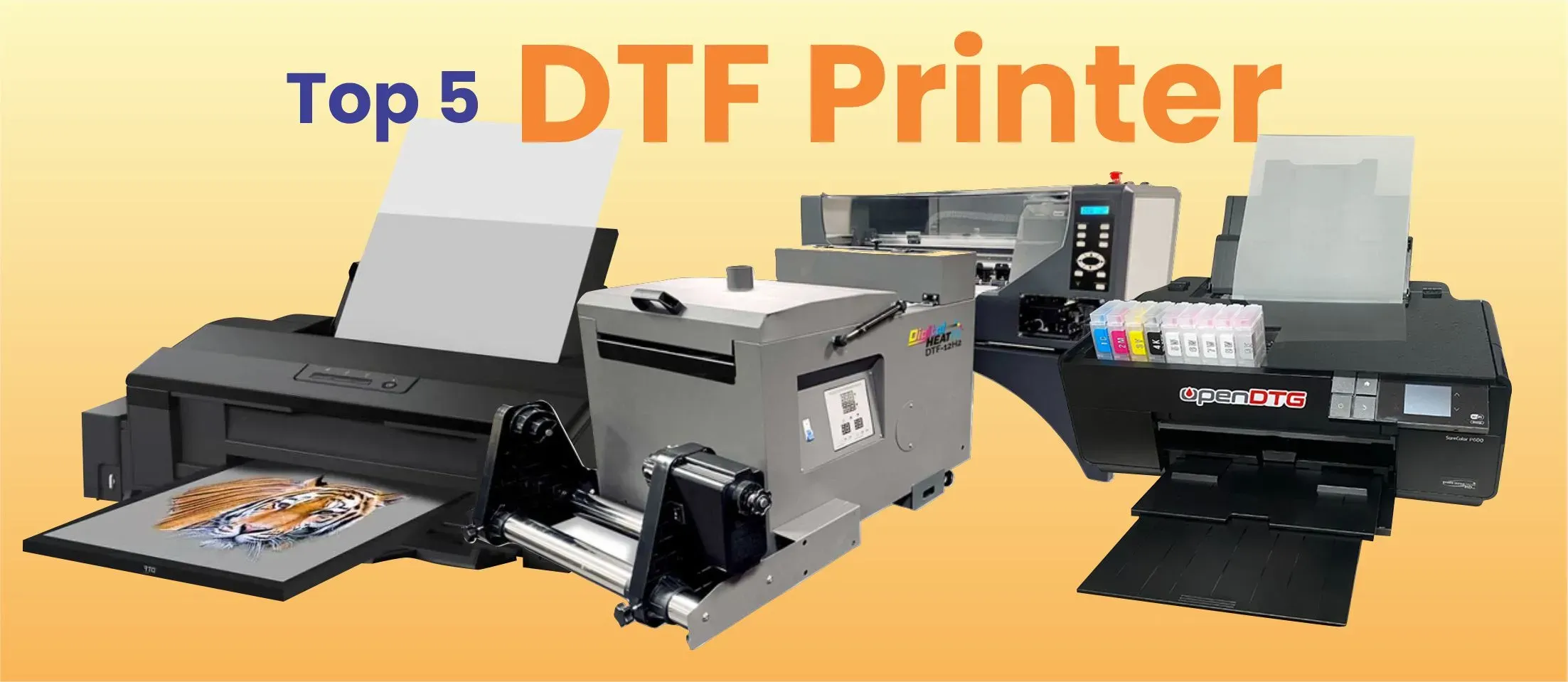When it comes to selecting the **best DTF printer**, the variety of choices can be quite overwhelming. Advances in DTF printing technology have brought forth machines that not only enhance quality but also improve efficiency in production. To ensure you make the right decision, understanding the differences among models is crucial, especially if you’re looking to print vibrant designs on fabrics. Many users have praised numerous models, leading to a plethora of **DTF printer reviews** that detail performance, durability, and ease of use. In this article, we will guide you through essential factors to consider, enabling you to choose the perfect DTF printer that meets your specific needs while ensuring outstanding **DTF printing quality**.
In the realm of textile printing, picking the right **Direct-to-Film** printer is essential for anyone looking to create custom designs efficiently. Known for its versatility and ability to produce high-fidelity prints, DTF printing has become a go-to method for both budding entrepreneurs and established businesses alike. The landscape of available options is vast, making it imperative to analyze features such as print resolution, operational costs, and user-friendliness. Whether you’re searching for recommendations on the **best printers for DTF** applications or seeking insights from **DTF printer reviews**, this guide will equip you with the knowledge to make an informed choice.
Best DTF Printer: Top Choices for Every Need
When it comes to selecting the best DTF printer, your choice should align with your specific printing needs. The market offers a diverse range of printers, from budget-friendly models for hobbyists to high-end, commercial-grade machines designed for extensive production. Printers like the LOKLiK iPrinter and Epson SureColor F2100 stand out due to their high print quality and adaptability to various fabric types. Whether you’re producing custom apparel or looking to expand your print services, these units will ensure you achieve vibrant colors and detailed prints that your customers will love.
Moreover, the evaluation of DTF printer reviews can aid you in making an informed decision. User feedback often highlights performance metrics such as reliability, ease of use, and the consistency of print quality. By carefully analyzing these reviews, you can gain insights into which printer will best meet your operational demands, ultimately leading to increased customer satisfaction and business growth.
Understanding the DTF Printing Process
DTF printing has revolutionized the textile printing industry by using a unique transfer method that ensures high-quality results. This process involves printing a design onto a film that is then transferred onto fabric with a heat press, which allows vibrant colors and detailed images to be applied efficiently. The flexibility of DTF printing means it can be employed on various materials, including cotton, polyester, and blended fabrics, expanding creative possibilities for designers and businesses alike.
The quality of prints produced through DTF methods is notably superior due to the specially formulated inks that resist fading and cracking. Businesses that prioritize high-quality products in their offerings should consider DTF printing as a viable option. This technique not only enhances the final product but also reduces the need for frequent reprints due to wear, thereby saving costs over time.
Key Factors to Consider When Selecting a DTF Printer
Choosing the right DTF printer is crucial, and several factors should be taken into account. First and foremost, print quality should be your top priority—look for models with a high DPI to ensure sharp and vibrant outputs. Cost-effectiveness is also a significant consideration; while some printers might be cheap upfront, ongoing costs for inks and maintenance can impact long-term profitability.
Additionally, speed plays a critical role in meeting production demands. For those operating in a business capacity, a printer that can handle multiple designs efficiently may provide an edge in a competitive market. Consider also the size and capability of the printer; whether you need a compact model for home use or something robust for industrial applications, ensuring the printer aligns with your output needs is essential.
The Advantages of DTF Printing
DTF printing delivers numerous advantages over traditional printing methods. One of the most significant benefits is versatility; DTF printers are compatible with a wide range of fabrics and materials, allowing for diverse applications, from custom t-shirts to promotional items. This flexibility enables businesses to cater to various customer preferences, promoting a broader service offering and the potential for increased sales.
Another major advantage is the durability of prints. DTF prints are known for their resistance to fading and cracking, which is vital for maintaining product quality over time. For businesses that want to ensure customer satisfaction through reliability, investing in DTF printing technology can be a strategic move, as it leads to less wastage and reprints.
Exploring the Best Printers for DTF
When looking for the best printers for DTF, several models have gained popularity for their performance and value. The **Epson SureColor F2100**, for instance, is noted for its high-resolution capabilities and is particularly favored among professional printers who need quality output. This printer’s ability to adapt to various fabric types makes it an ideal choice for businesses wanting versatility in their production.
On the other hand, the **Brother GTXpro** has received accolades for its speed and efficiency, making it suitable for high-volume operations. Its intuitive interface and quick setup are significant benefits for those new to DTF printing, ensuring that you can hit the ground running. Both of these models cater to different needs but ultimately offer quality and dependability.
Latest Trends in DTF Printing Technology
The DTF printing industry is continuously evolving, with advancements geared towards enhancing user experience and print quality. One of the latest trends is the integration of advanced software that streamlines the design and printing process. Many modern DTF printers now come equipped with user-friendly software that makes it easier to modify designs and manage print jobs, significantly improving workflow efficiency.
In addition to technological advancements, there is a growing emphasis on sustainability within the DTF printing space. Manufacturers are increasingly adopting eco-friendly inks and components to reduce their environmental impact, appealing to a more environmentally conscious market. This trend not only benefits the planet but can also position businesses favorably in the eyes of consumers who value sustainable practices.
Frequently Asked Questions
What are the best DTF printers available in 2023?
Some of the best DTF printers in 2023 include the LOKLiK iPrinter, Epson SureColor F2100, and Brother GTXpro. These models are renowned for their print quality, speed, and versatility, making them ideal choices for both newcomers and established businesses looking to enhance their DTF printing capabilities.
How do I choose the best DTF printer for my small business?
To choose the best DTF printer for your small business, consider factors like print quality, cost-effectiveness, speed, and the printer’s size capacity. Models like LOKLiK iPrinter and Brother GTXpro provide excellent options that balance affordability and performance, making them suitable for small business needs.
What should I look for in DTF printer reviews?
In DTF printer reviews, look for insights on print quality, ease of use, speed of production, customer service experiences, and cost of operation. Reviews of models like the Epson SureColor F2100 often highlight their reliability and the quality of prints, which are crucial factors to consider.
What makes DTF printing a good choice for custom apparel?
DTF printing is an excellent choice for custom apparel due to its versatility in printing on various fabrics, high-quality vibrant prints, and durability. These factors enable businesses to create unique designs that withstand wear and washing, meeting customer demands effectively.
Can I print on dark fabrics with the best DTF printers?
Yes, the best DTF printers, like the Brother GTXpro, are designed to handle printing on dark fabrics by utilizing special white ink that allows vibrant colors to pop on darker backgrounds. This versatility is one of the key advantages of DTF printing over other methods.
What are the latest trends in DTF printing technology?
Latest trends in DTF printing technology include enhanced software integration for easier design workflows, increased user-friendliness in printer models, and a focus on eco-friendly inks and materials. These innovations aim to improve print quality and sustainability in the printing process.
| Key Factor | Details |
|---|---|
| Print Quality | Look for high DPI for sharp, vivid prints. |
| Cost-Effectiveness | Consider total cost including ink and maintenance, not just initial price. |
| Speed | Select a printer that meets your production demands for timely fulfillment. |
| Printer Size | Choose a printer that accommodates the dimensions of your intended prints. |
| Customer Support | Access to reliable support and a good warranty can ease potential concerns. |
Summary
The best DTF printer for your needs can transform your printing projects and elevate your business. By considering essential factors such as print quality, cost-effectiveness, speed, printer size, and manufacturer support, you will be well-equipped to make an informed choice. Whether you lean towards budget-friendly models like the LOKLiK iPrinter or require robust performance from options like the Epson SureColor, understanding these considerations will help you select a DTF printer that aligns perfectly with your aspirations. Stay informed about the latest trends in DTF technology to ensure your investment is both wise and future-proof.

